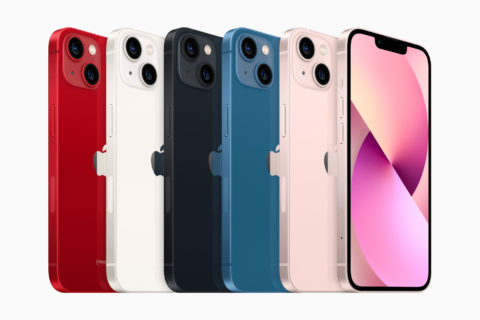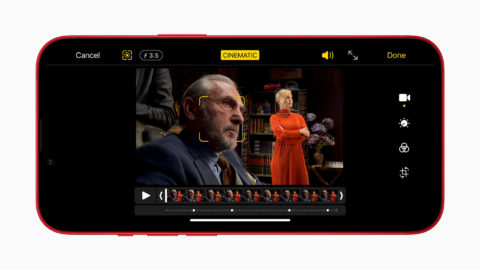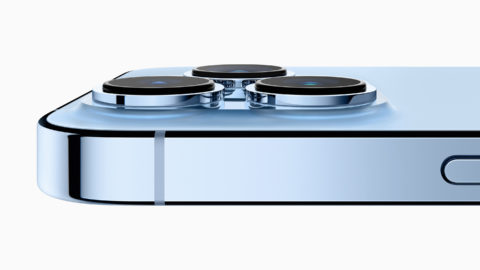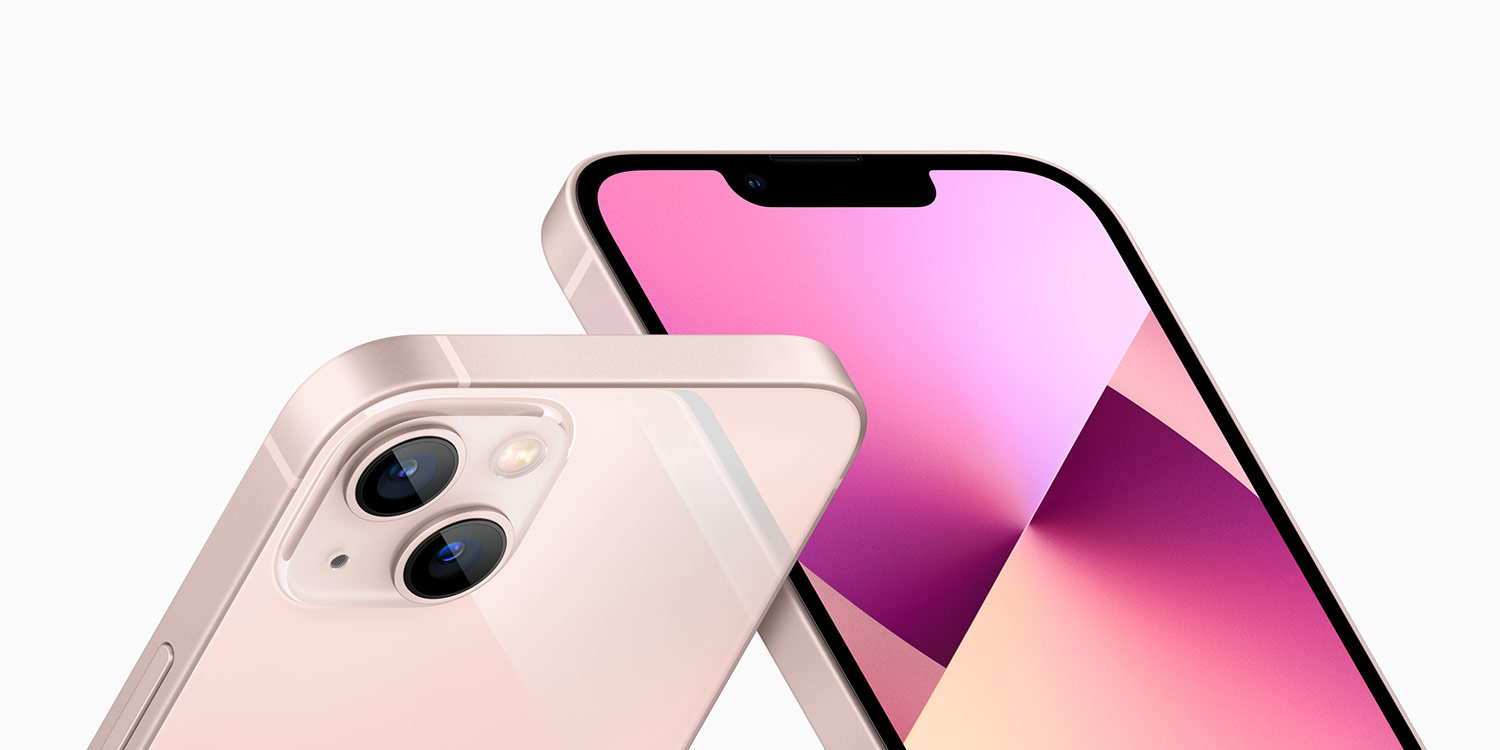As expected, Apple has brought four new iPhones to the table at its September 14 “California Streaming” event.
This was very much a “tock” year with fairly modest changes across the board. These iPhones look the same as last year, they cost the same, and there’s little in the way of hot new features to take the headlines.
Despite that, each of them has improved significantly over the hood, with the biggest gains going the way of camera quality, battery life, and display fidelity. Arguably three of the most important factors in a smartphone.
Let’s take a closer look at the four-strong iPhone 13 family.
iPhone 13
Apple’s iPhone 13 has borrowed from the design of last year’s model while offering an enhanced camera system, improved battery life, and the fastest chip ever on a smartphone. And although the iPhone 13 is the most mainstream model out there, there are a handful of pro-level features which shouldn’t be overlooked.

iPhone 13.
Take the all-new camera system. Apple’s iPhone 13 is adopting the camera technology of last year’s high-end iPhone 12 Pro Max, and features a bigger sensor that makes it possible to capture even better low-light images. On the iPhone 13, Night mode shots will look far better when compared with the iPhone 12.
Cinematic mode for video looks to be something special – the feature uses machine learning to shift the focus between subjects when shooting video in the Camera app. When a person enters the frame, your iPhone 13 will sharpen the focus on their face. When they leave, the focus will switch to the next appropriate object (or person).
This technology is made possible by the A15 Bionic chip – the most powerful smartphone chip in the world. This means that when compared with last year’s models, your iPhone 13 will feel snappier – especially when processing complex tasks like real-time language translation, or powering super-powerful games.
The efficiency of the A15 Bionic – alongside the handset’s slightly larger battery – means the iPhone 13’s battery life is better than last year’s iPhone 12, too. You’ll get up to 2.5 hours extra per charge, which isn’t to be sniffed at. Who needs a MagSafe battery pack?

Cinematic mode.
Although the hardware design of the iPhone 13 is almost identical to the iPhone 12, the sharp-eyed among you will notice that the TrueDepth camera – or Face ID notch – is slightly smaller. This might not be the camera-in-the-screen iPhone we’d been hoping for, but it’s a step in the right direction. As you’d expect, this provides slightly more screen real estate.
Apple’s iPhone 13 is priced at $799 (128GB), $899 (256GB), and $1090 (512GB), and it’s available in five new colors: Pink, Blue, Midnight, Starlight, and (PRODUCT)RED.
iPhone 13 mini
Somewhat surprisingly, Apple’s mini iPhone – which suffered poor sales in 2020 – lives on in the iPhone 13 mini. Like last year, the mini device shares most of the same features as its larger counterpart, meaning iPhone 13 mini customers get enhanced cameras, Cinematic mode, and the powerful A15 Bionic chip.
However, the iPhone 13 mini’s smaller footprint naturally means it houses a smaller battery – instead of an extra 2.5 hours per charge, owners of the mini iPhone will benefit from 1.5 hours additional battery life (which, let’s be honest, is better than nothing).
Apple’s iPhone 13 mini is priced at $699 (128GB), $799 (256GB), and $999 (512GB), and it’s available in five new colors: Pink, Blue, Midnight, Starlight, and (PRODUCT)RED.
iPhone 13 Pro
It may look more or less the same as ever, but Apple’s iPhone “Pro” lineup is even more pro than before.
The iPhone 13 Pro brings an anticipated feature to the handset – ProMotion. But what’s the big fuss? Well, Apple’s ProMotion displays refresh the screen at a much higher rate (of up to 120Hz). This means that when you use the smartphone to browse the Web or play games, content feels faster and more responsive.

iPhone 13 Pro.
Intelligently, ProMotion offers an adaptive refresh rate, meaning your iPhone 13 Pro will recognize when the refresh rate should be higher and when it can be lower, resulting in better power efficiency. When you scroll a web page, it matches the refresh rate precisely to the speed of your swiping to make things feel as smooth as possible. And the display can push brightness up to 1,000 nits, meaning content will appear sharper and more vibrant.
On top of that, the iPhone 13 Pro’s three-lens camera system increases the telephoto lens zoom to 3x – meaning a total of 6x optical zoom is possible across the three cameras. All three cameras now also support Apple’s Night mode, meaning enhanced low-light photography.
And a new Macro mode will let you shoot images as close as 2 cm away with the ultra-wide camera – something previous iPhones (including last year’s Pro models) have struggled with.

Shot on iPhone 13 Pro using Macro mode
Apple’s iPhone 13 Pro is priced at $999 (128GB), $1099 (256GB), $1299 (512GB), and $1499 (1TB) and it’s available in four colors: Sierra Blue, Silver, Gold, and Graphite.
iPhone 13 Pro Max
Like last year, Apple’s iPhone 13 Pro is also available in a super-sized Max version. Again, the main difference here is the larger 6.7-inch screen (as opposed to the iPhone 13 Pro’s 6.1-inches) and a bigger battery. Gone are the days when only the biggest iPhone got optical image stabilization. Now, while the iPhone 13 Pro can power 22 hours of video playback, Apple’s iPhone 13 Pro Max can power a whopping 28 hours.
Apple’s iPhone 13 Pro is priced at $1099 (128GB), $1199 (256GB), $1399 (512GB), and $1599 (1TB) and it’s also available in four colors: Sierra Blue, Silver, Gold, and Graphite.

